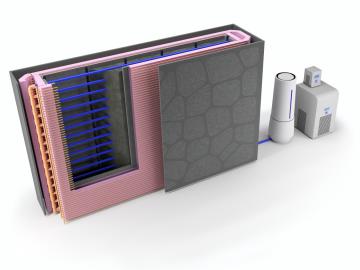
Filter News
Area of Research
- (-) Energy Science (50)
- (-) National Security (5)
- (-) Neutron Science (5)
- (-) Nuclear Science and Technology (3)
- Advanced Manufacturing (11)
- Biology and Environment (19)
- Building Technologies (1)
- Computational Biology (1)
- Computational Engineering (2)
- Computer Science (6)
- Electricity and Smart Grid (1)
- Fusion Energy (1)
- Isotopes (3)
- Materials (12)
- Materials for Computing (2)
- Mathematics (1)
- Quantum information Science (1)
- Sensors and Controls (1)
- Supercomputing (10)
News Topics
- (-) 3-D Printing/Advanced Manufacturing (23)
- (-) Big Data (3)
- (-) Biomedical (4)
- (-) Cybersecurity (1)
- (-) Environment (17)
- (-) Grid (16)
- (-) Isotopes (1)
- (-) Physics (1)
- (-) Security (1)
- (-) Space Exploration (4)
- Advanced Reactors (4)
- Artificial Intelligence (2)
- Bioenergy (3)
- Biology (2)
- Biotechnology (1)
- Buildings (13)
- Chemical Sciences (2)
- Clean Water (4)
- Composites (9)
- Computer Science (10)
- Coronavirus (3)
- Critical Materials (4)
- Energy Storage (23)
- Fusion (1)
- High-Performance Computing (1)
- Hydropower (2)
- Machine Learning (2)
- Materials (15)
- Materials Science (12)
- Mathematics (1)
- Mercury (1)
- Microscopy (3)
- Molten Salt (3)
- Nanotechnology (2)
- Neutron Science (24)
- Nuclear Energy (10)
- Polymers (5)
- Quantum Science (1)
- Simulation (1)
- Statistics (1)
- Summit (1)
- Transportation (28)
Media Contacts

Algorithms developed at Oak Ridge National Laboratory can greatly enhance X-ray computed tomography images of 3D-printed metal parts, resulting in more accurate, faster scans.

Oak Ridge National Laboratory researchers used additive manufacturing to build a first-of-its kind smart wall called EMPOWER.

Oak Ridge National Laboratory scientists evaluating northern peatland responses to environmental change recorded extraordinary fine-root growth with increasing temperatures, indicating that this previously hidden belowground mechanism may play an important role in how carbon-rich peatlands respond to warming.

Researchers at Oak Ridge National Laboratory developed a method that uses machine learning to predict seasonal fire risk in Africa, where half of the world’s wildfire-related carbon emissions originate.

Oak Ridge National Laboratory researchers have discovered a better way to separate actinium-227, a rare isotope essential for an FDA-approved cancer treatment.
An international team of scientists found that rules governing plant growth hold true even at the edges of the world in the Arctic tundra.

Researchers at Oak Ridge National Laboratory demonstrated a 20-kilowatt bi-directional wireless charging system on a UPS plug-in hybrid electric delivery truck, advancing the technology to a larger class of vehicles and enabling a new energy storage method for fleet owners and their facilities.

Researchers at ORNL demonstrated that sodium-ion batteries can serve as a low-cost, high performance substitute for rechargeable lithium-ion batteries commonly used in robotics, power tools, and grid-scale energy storage.

A novel approach developed by scientists at ORNL can scan massive datasets of large-scale satellite images to more accurately map infrastructure – such as buildings and roads – in hours versus days.

To better determine the potential energy cost savings among connected homes, researchers at Oak Ridge National Laboratory developed a computer simulation to more accurately compare energy use on similar weather days.


